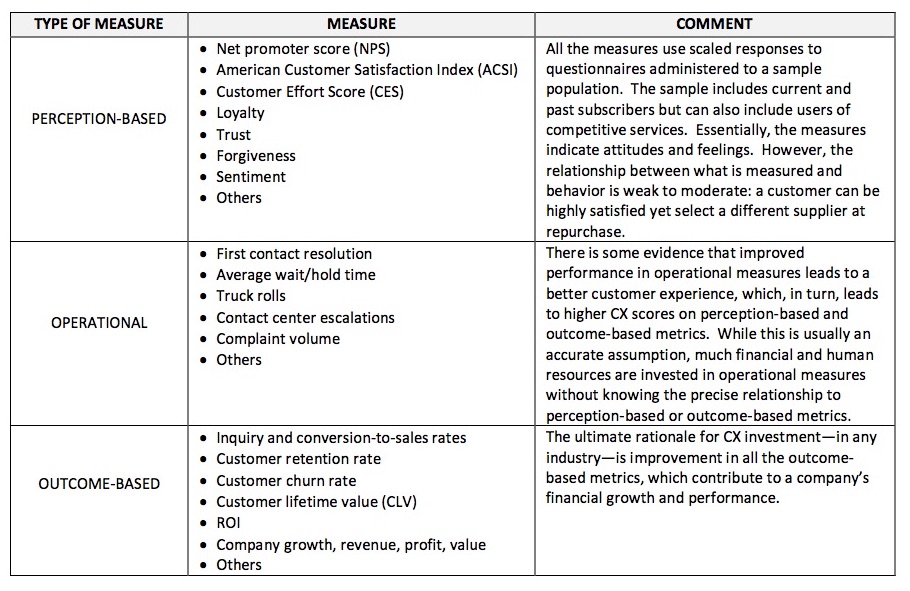Improving CX through Better Measurement
2. Customer journey mapping drives CXm
Customer journey mapping has many benefits in terms of understanding the customers’ motivations, tasks, importance of product features, influence of others, and touchpoints. Measuring CX at each stage of the customer’s subscription journey (from pre-purchase to purchase and post-purchase) is critical, since a negative experience at any point can result in termination of the journey. The CXm issue is knowing what measurement tools to use at each stage of the journey Table 1 shows the most likely scenario for telcos, wireless service providers, and cable operators.
3. Knowing the three different types of CX measures help guide CXm decisions
Classifying CX measures into types helps us understand what to expect from measurements. From our study, three types of measures were identified: perception-based, operational, and outcome-based. See Table 2 below For example, perception-based metrics let us know how a subscriber feels about us and about various aspects of our products and processes. Reading more into perception-based metrics can get us into trouble because none of them are particularly strong predictors of behavior. Operational metrics are grounded in: (1) operating efficiency and (2) the assumption that better operational performance create a better customer experience—and a better experience leads to better outcome-based metrics. For most companies, outcome-based metrics are the goal: they reflect the consequences or behaviors that result from CX initiatives and translate to a company’s financial performance. Ideally, we can demonstrate the relationship between CX investments to outcome-based metrics. Clearly establishing that relationship is challenging, however, since perception and operations are at least one step removed from the desired, ultimate behavior, e.g. revenue.





















